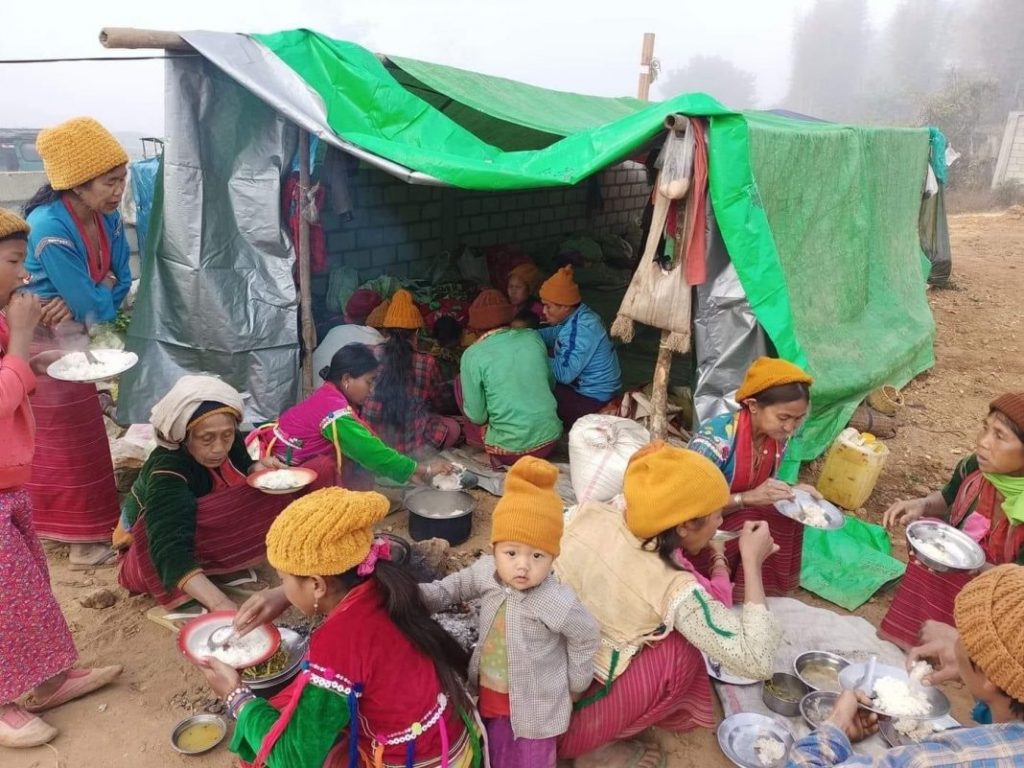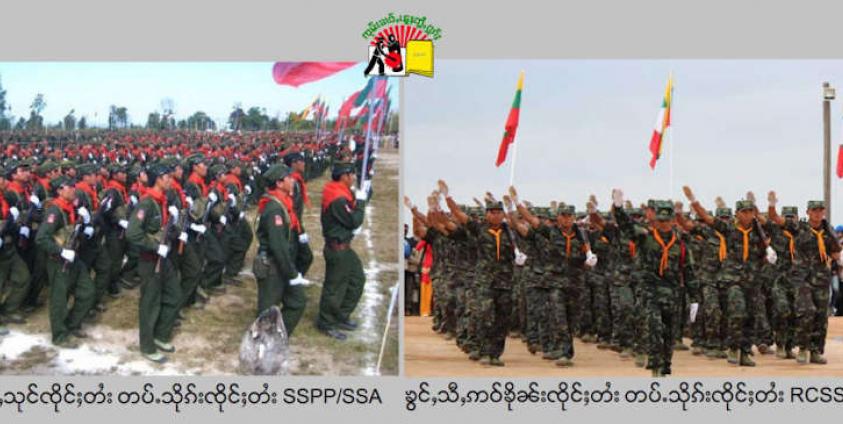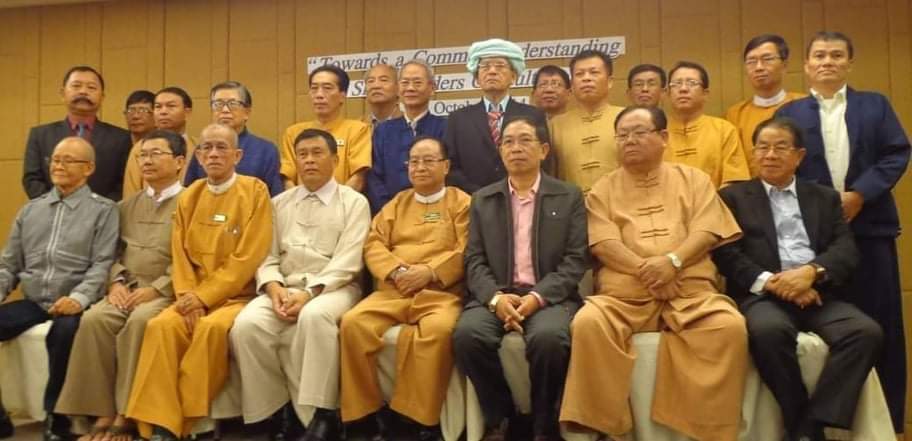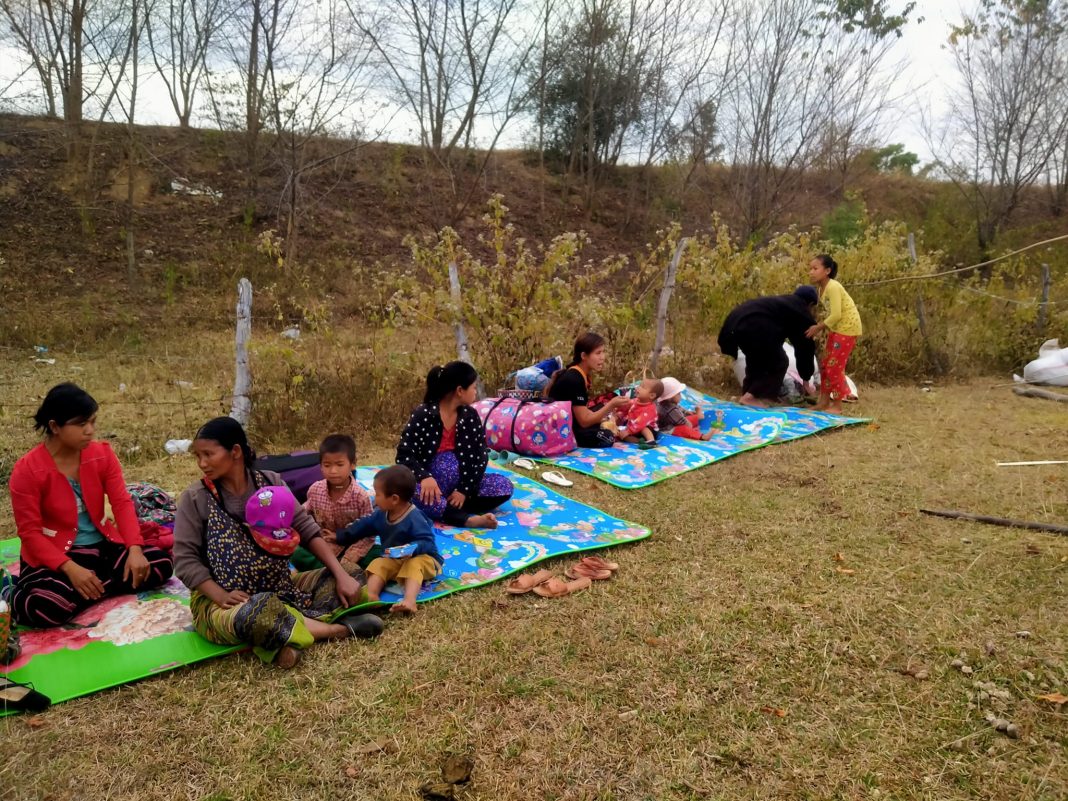“This is the season of harvesting maze and paddy. Some could not harvest their paddy, and most of the IDPs did not have a chance to collect their corns,” a woman in the IDP camp told SHAN.

The intense fight between one Shan armed group and northern alliance armed groups in Mong Kung township, Southern Shan State, has led to thousands of IDPs fleeing their homes in January 2022 according to the woman who was displaced.
Some residents also said that they had to run away because of the conflict between Restoration Council of Shan State (RCSS/SSA) and Shan State Progressive Party (SSPP/SSA) started in the second week of September 2021.
According to the data collected in January 2022, 798 households comprising 2,635 people have been displaced, “ Over thirty villages have been relocated,” quoted by a person who is helping the IDPs around that area.
The IDPs who are staying at a monastery compound, where seasonal festivals are usually celebrated in Mong Kung, cannot go back home yet because the armed groups are still positioning in their villages.
Those IDPs arrived at that monastery on 6 January 2022, and some has returned; however, some cannot return due to the armed groups are still in their villages. They are making a request to stop the fights and leave from their villages because the villagers need to harvest their crops.
They are also worried about their properties and livestock at home since they had to flee urgently when the fight broke out.
“If we do not work for a day, we will not have enough for a week. If we do not work for a month, we will have difficulties for the whole year. I need to pick my green tea, and I need to get back to work,” an internally displaced woman who lives in Huay Tuay village told SHAN.
The locals mentioned another pressing issue about the forced enlisting made by the ethnic armed groups in Shan State due to the severe fight between the groups.
The locals added that those ethnic armed groups have a policy to enlist new soldiers every year which made the young men in the village to run away during the enlisting season.
The common goal of these ethnic armed groups were to overthrow the military dictatorship and to establish a federal union or to gain self-determination.
However, it is questionable why these ethnics armed groups, which have the same common goal, are fighting one another.
According to the history, the 34 townships in Shan State, including Ko Kang region, were freely administered by their respective Sawbwar though it was a feudalism system.
Even though Myanmar was fallen under British colonization after the fall of Mandalay in 1885, the British colony only came to Shan State in 1886.

After that, Sawbwars still freely administered the 34 townships in Shan State along with British colony until Myanmar’s independence.
According to the Panglong agreement made on 12 February 1947, the Shan hills got independence with mainland Myanmar from the British. After that, Myanmar political issues started to influence into Shan State.
Because of the Kuomintang or Chinese Nationalist Party soldiers invaded into Shan State in 1952, the Myanmar central government spent three years fighting and chasing CNP soldiers out of Shan State.
During the warfare operation in Shan State, the central government announced the state of emergency in Shan State and oppressed Shan civilians, and the Sawbwars and Shan youth could not stand that. So, two dialogues were made, one in 1954 and the other in 1957, in Mong Yai to discuss about the Panglong agreement promises and whether to secede from the union of Myanmar after ten years from the signing agreement date.
After the central government could not decide on the seceding issue, military coup occurred. As a consequence, the military took over the power in 1962 and abolished the Sawbwar’s feudalism system, and it was the reason and the start of Shan armed revolution establishment.
It can be concluded that the establishment of Shan armed revolution was due to the abolishment of Sawbwar’s feudalism and Myanmar military oppression. The nowadays Shan ethnics armed groups conflict could be influenced by the idea of the revolution started in those days.

Today, the two Shan armed groups said they are opened to a political dialogue to solve the conflicts between them. However, the fight is still ongoing in Mong Kung township, Southern Shan State, and Kyuakme and Hsipaw township, Northern Shan State.
Because of the fight, thousands of people have to flee their homes and relocate to somewhere safe.
“We always open the doors for a political dialogue. It is not just for RCSS, but also for the political parties, venerable monks groups, and peace building groups, we welcome them all for a political dialogue,” SSPP/SSA spokesperson, Major Sai Phone Harn told SHAN.
RCSS/SSA spokesperson Major Kham Sam said that they are ready for a dialogue to find solutions regarding the conflicts with SSPP/SSA; however, it has not happened as Shan civilians expected so far.
“We are always ready for a dialogue. We expressed this idea in the past, but it did not happen. Only more conflicts are escalating between us currently,” the RCSS/SSA spokesperson quoted.
The two armed groups are accusing one another over the territorial issues, and the fights only led to thousands of people relocating again and again.
In order for the two Shan armed groups to reconcile, one of the most respected Shan political leaders U Khun Htun Oo used to be the middleman trying to solve the issues between them before his retirement. However, it was not a success.
“He (U Khun Htun Oo) was very disappointed in them,” a person who is closed to U Khun Htun Oo said.
Additionally, Committee for Shan State Unity (CSSU) has tried to reconcile the two groups and to stop the conflicts between them, and a statement was released on 1 January 2022; however, the fight is still ongoing in Shan State.

The current tension and fight in Mong Kung has led to thousands of locals to run and take refuge in the city of Mong Kung township, and nearby township like Laikha. Plus there are many IDPs in Northern Shan State because of the war in Kyaukme and Hsipaw township.
“It is not that we want this battle to occur, we truly do not want this too because there are casualties on both sides and civilians. The question is who started this fight, and who is going to end this,” SSPP/SSA spokesperson, Major Sai Phone Harn told SHAN.
We understand and feel the pain of our Shan civilians, we will redevelop and reconstruct the loss of the civilians Major Sai Phone Harn added.
Regarding the current tension, RCSS/SSA said that if the offensive fights are ended, there will not be any war, “In order to stop the conflict, the other side must stop their offensive moves. It is all depending on their side,” quoted by RCSS/SSA spokesperson Major Kham Sam.
One of the consequences of the conflict was that a woman who lives in Maung Leng village, Pan Kay Thu tract, Mong Kung township, has stepped on a land mine set up by the two armed groups and severely injured herself.
If RCSS/SSA will still be active in the areas where SSPP/SSA is controlling, the ongoing fight would spread into Nam Sang – Kholam township warned by SSPP/SSA Lt. Col. Sai Su.
Additionally, on 11 January 2022, one humanitarian car was shot while it was going to the IDPs camp near the entry signboard of Mong Kung township to collect things from the camp.
Recently, fights broke out in Northern Shan State between Kyaukme and Hsipaw township along the Mandalay – Muse highway. Because of that, the IDPs from Hsipaw township are relocated to Pawjo monastery, and the IDPs from Kyaukme township are taking refuge at Nam Sit Lin monastery in the city, and some are staying at their relatives house.
It is clearly indicated that local residents have long been the victims of the so called battle-cry “to establish a federal union or to overthrow the military dictatorship” of these Shan armed groups.
The civilians are interested to see how these ethnic armed groups, who claimed their common enemy is the Myanmar military junta, will get involved in the current nationwide armed revolution.
Currently, there are over 2,500 IDPs in the city of Mong Kung, over 800 in Laikha, Southern Shan State, and thousands have been displaced in Kyuakme township, Northern Shan State.




